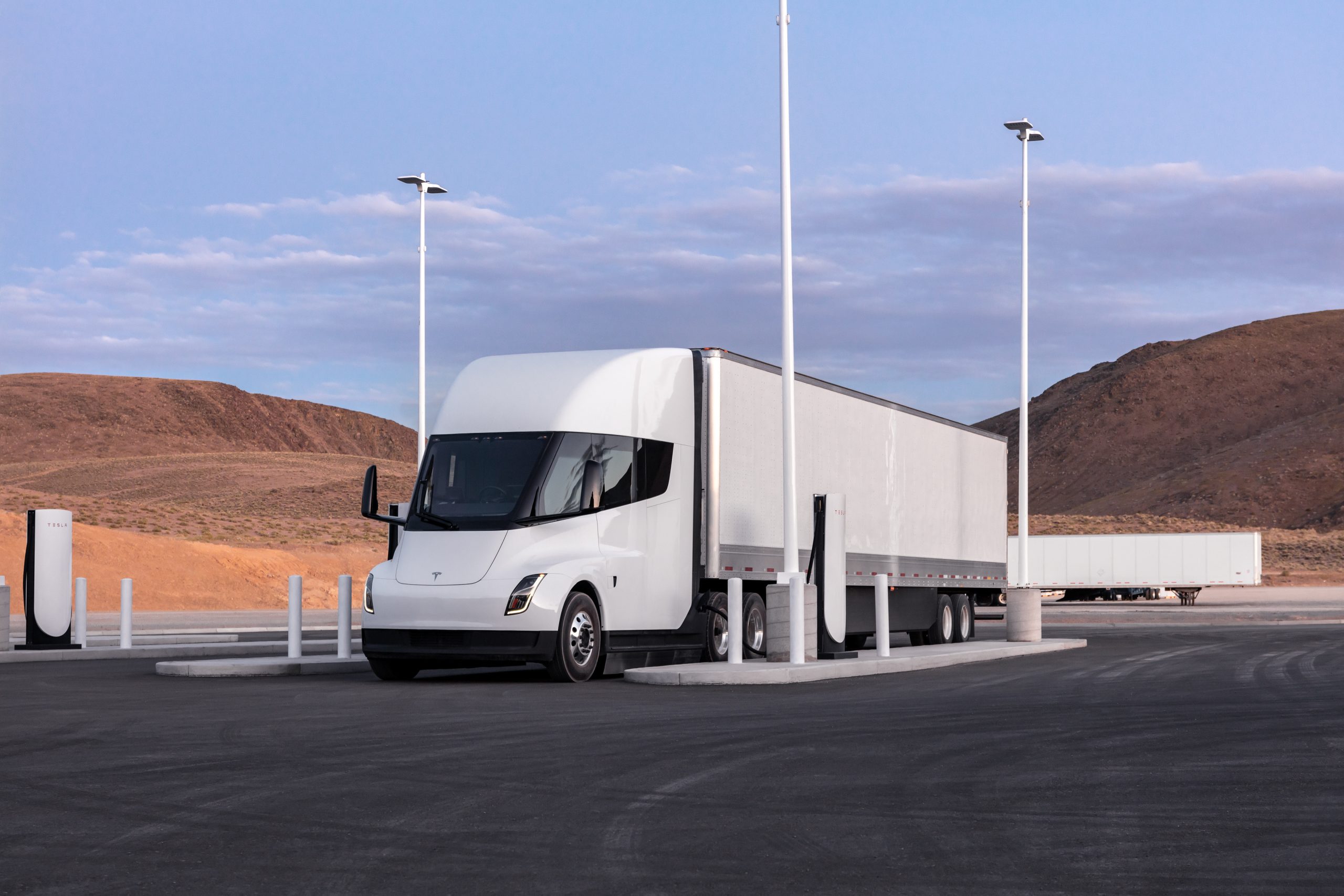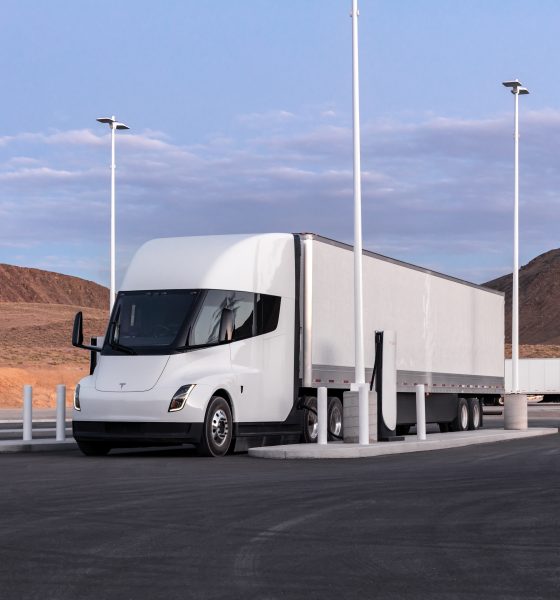The Tesla Semi has officially landed the green light to be delivered to customers. The EPA confirmed to Teslarati that the Semi has been assessed by the agency and granted a Certificate of Conformity to enter the stream of commerce, something Tesla had not gained from the agency in previous years after announcing imminent deliveries in 2020 and 2021.
In early October, Tesla CEO Elon Musk said Semi deliveries would begin on December 1. After the company has claimed this twice in the past two years, some may have been skeptical that the truck would actually arrive in 2022.
However, the EPA granting the Semi a Certificate of Conformity means the vehicle can officially enter the stream of commerce, permission the company had not gained previously.
Excited to announce start of production of Tesla Semi Truck with deliveries to @Pepsi on Dec 1st! pic.twitter.com/gq0l73iGRW
— Elon Musk (@elonmusk) October 6, 2022
The EPA told Teslarati that the 2023 Tesla Semi has officially been granted a Certificate of Conformity, which was given to the manufacturer on September 29. The Certificate is valid until December 31, 2023.
Yesterday, we also reported that various Model S, Model X, and Model 3 trim levels had received Certificates of Conformity from the EPA for the 2023 model years.
Certificates of Conformity are granted by the EPA when a vehicle is confirmed to be conforming to the agency’s emissions and fuel economy requirements. “Every class of heavy-duty engines/vehicles and nonroad engines introduced into commerce in the U. S. must have a Certificate of Conformity, and they are valid for only one model year of production,” the EPA said.
Tesla announced in 2020 and 2021 that it planned to begin volume production and deliveries of the Semi. Battery constraints, parts shortages, and other issues related to the supply chain kept this from happening. Tesla had not previously applied for the Semi to be approved for a Certificate of Conformity based on the EPA’s list of approved heavy-duty vehicles. The EPA updates this list quarterly, and the Semi has never appeared on it. The EPA confirmed to Teslarati that the Semi would be added to the list of conforming heavy-duty vehicles in January 2023.
What the EPA Certification means for the Semi
Tesla has never gained a conformity certification from the EPA for the Semi, which is a significant indicator that the vehicle will begin deliveries soon. Even if Tesla does not deliver the vehicle to PepsiCo. on December 1 as it previously said and PepsiCo. confirmed, the company can officially use the Semi on public roads and deliver it to clients.
As of right now, the only reason Tesla would not deliver the vehicle to PepsiCo. on December 1 is if the vehicle is not built or there is a delay in the vehicle making it to its destination. With the EPA permissions, Tesla can officially begin deliveries at any point.
In the past, Tesla has said the vehicle would be delivered that year, only to be delayed. Don’t expect another drastic delay from Tesla that would delay deliveries further, as regulatory approval is finally official.
Tesla is expected to make the first deliveries of the Semi to PepsiCo. in Modesto and Sacramento, California facilities.
Teslarati obtained the Certificate of Conformity for the Tesla Semi, which is available below.
Ptsl2tracshd-001 Watermark (1) by Joey Klender
I’d love to hear from you! If you have any comments, concerns, or questions, please email me at joey@teslarati.com. You can also reach me on Twitter @KlenderJoey, or if you have news tips, you can email us at tips@teslarati.com.

News
Tesla starts showing how FSD will change lives in Europe
Local officials tested the system on narrow country roads and were impressed by FSD’s smooth, human-like driving, with some calling the service a game-changer for everyday life in areas that are far from urban centers.

Tesla has launched Europe’s first public shuttle service using Full Self-Driving (Supervised) in the rural Eifelkreis Bitburg-Prüm region of Germany, demonstrating how the technology can restore independence and mobility for people who struggle with limited transport options.
Local officials tested the system on narrow country roads and were impressed by FSD’s smooth, human-like driving, with some calling the service a game-changer for everyday life in areas that are far from urban centers.
Officials see real impact on rural residents
Arzfeld Mayor Johannes Kuhl and District Administrator Andreas Kruppert personally tested the Tesla shuttle service. This allowed them to see just how well FSD navigated winding lanes and rural roads confidently. Kruppert said, “Autonomous driving sounds like science fiction to many, but we simply see here that it works totally well in rural regions too.” Kuhl, for his part, also noted that FSD “feels like a very experienced driver.”
The pilot complements the area’s “Citizen Bus” program, which provides on-demand rides for elderly residents who can no longer drive themselves. Tesla Europe shared a video of a demonstration of the service, highlighting how FSD gives people their freedom back, even in places where public transport is not as prevalent.
What the Ministry for Economic Affairs and Transport says
Rhineland-Palatinate’s Minister Daniela Schmitt supported the project, praising the collaboration that made this “first of its kind in Europe” possible. As per the ministry, the rural rollout for the service shows FSD’s potential beyond major cities, and it delivers tangible benefits like grocery runs, doctor visits, and social connections for isolated residents.
“Reliable and flexible mobility is especially vital in rural areas. With the launch of a shuttle service using self-driving vehicles (FSD supervised) by Tesla in the Eifelkreis Bitburg-Prüm, an innovative pilot project is now getting underway that complements local community bus services. It is the first project of its kind in Europe.
“The result is a real gain for rural mobility: greater accessibility, more flexibility and tangible benefits for everyday life. A strong signal for innovation, cooperation and future-oriented mobility beyond urban centers,” the ministry wrote in a LinkedIn post.
News
Tesla China quietly posts Robotaxi-related job listing
Tesla China is currently seeking a Low Voltage Electrical Engineer to work on circuit board design for the company’s autonomous vehicles.

Tesla has posted a new job listing in Shanghai explicitly tied to its Robotaxi program, fueling speculation that the company is preparing to launch its dedicated autonomous ride-hailing service in China.
As noted in the listing, Tesla China is currently seeking a Low Voltage Electrical Engineer to work on circuit board design for the company’s autonomous vehicles.
Robotaxi-specific role
The listing, which was shared on social media platform X by industry watcher @tslaming, suggested that Tesla China is looking to fill the role urgently. The job listing itself specifically mentions that the person hired for the role will be working on the Low Voltage Hardware team, which would design the circuit boards that would serve as the nervous system of the Robotaxi.
Key tasks for the role, as indicated in the job listing, include collaboration with PCB layout, firmware, mechanical, program management, and validation teams, among other responsibilities. The role is based in Shanghai.
China Robotaxi launch
China represents a massive potential market for robotaxis, with its dense urban centers and supportive policies in select cities. Tesla has limited permission to roll out FSD in the country, though despite this, its vehicles have been hailed as among the best in the market when it comes to autonomous features. So far, at least, it appears that China supports Tesla’s FSD and Robotaxi rollout.
This was hinted at in November, when Tesla brought the Cybercab to the 8th China International Import Expo (CIIE) in Shanghai, marking the first time that the autonomous two-seater was brought to the Asia-Pacific region. The vehicle, despite not having a release date in China, received a significant amount of interest among the event’s attendees.
Elon Musk
Elon Musk and Tesla AI Director share insights after empty driver seat Robotaxi rides
The executives’ unoccupied tests hint at the rapid progress of Tesla’s unsupervised Robotaxi efforts.

Tesla CEO Elon Musk and AI Director Ashok Elluswamy celebrated Christmas Eve by sharing personal experiences with Robotaxi vehicles that had no safety monitor or occupant in the driver’s seat. Musk described the system’s “perfect driving” around Austin, while Elluswamy posted video from the back seat, calling it “an amazing experience.”
The executives’ unoccupied tests hint at the rapid progress of Tesla’s unsupervised Robotaxi efforts.
Elon and Ashok’s firsthand Robotaxi insights
Prior to Musk and the Tesla AI Director’s posts, sightings of unmanned Teslas navigating public roads were widely shared on social media. One such vehicle was spotted in Austin, Texas, which Elon Musk acknowleged by stating that “Testing is underway with no occupants in the car.”
Based on his Christmas Eve post, Musk seemed to have tested an unmanned Tesla himself. “A Tesla with no safety monitor in the car and me sitting in the passenger seat took me all around Austin on Sunday with perfect driving,” Musk wrote in his post.
Elluswamy responded with a 2-minute video showing himself in the rear of an unmanned Tesla. The video featured the vehicle’s empty front seats, as well as its smooth handling through real-world traffic. He captioned his video with the words, “It’s an amazing experience!”
Towards Unsupervised operations
During an xAI Hackathon earlier this month, Elon Musk mentioned that Tesla owed be removing Safety Monitors from its Robotaxis in Austin in just three weeks. “Unsupervised is pretty much solved at this point. So there will be Tesla Robotaxis operating in Austin with no one in them. Not even anyone in the passenger seat in about three weeks,” he said. Musk echoed similar estimates at the 2025 Annual Shareholder Meeting and the Q3 2025 earnings call.
Considering the insights that were posted Musk and Elluswamy, it does appear that Tesla is working hard towards operating its Robotaxis with no safety monitors. This is quite impressive considering that the service was launched just earlier this year.










